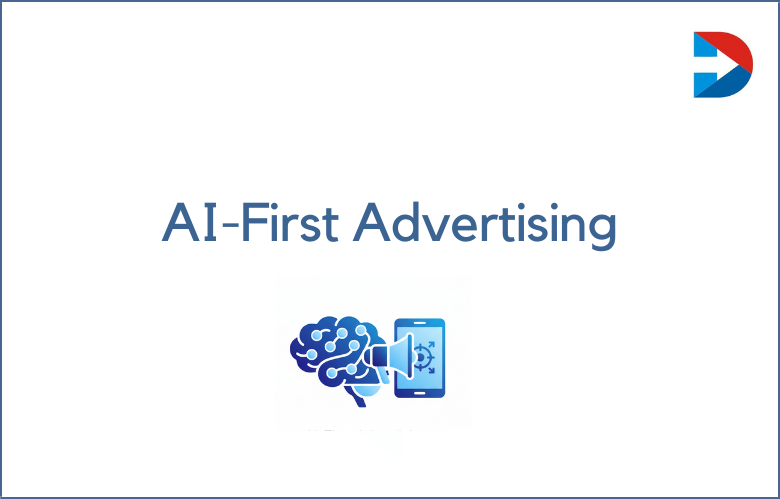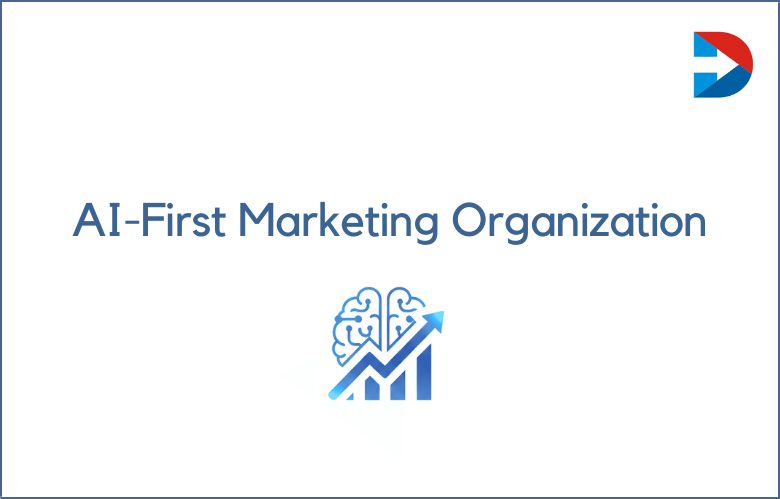Performance marketing is a results-driven approach where businesses pay only when a specific action occurs, such as a click, lead, or sale. Unlike traditional advertising models that charge upfront, performance marketing minimizes risk and ensures accountability. The advertiser, publisher, and consumer each play a defined role, with technology enabling precise tracking of actions and outcomes.
Benefits of Performance Marketing for E-Commerce Businesses
Increased Sales
Performance marketing helps e-commerce companies attract highly targeted traffic. When campaigns are well-executed, this traffic converts into purchases, producing measurable growth in sales.
Cost Efficiency
Unlike television, print, or billboard advertising, businesses pay only when users take defined actions. This efficiency ensures that every dollar spent contributes directly to measurable outcomes.
Higher Return on Investment (ROI)
Because costs are tied to performance, the model naturally drives stronger ROI. Performance-based pricing also motivates marketing partners to optimize campaigns for the best results.
Brand Awareness
Strategic campaigns can increase visibility and attract new customers. As audiences engage with the brand, recognition grows, helping companies establish long-term loyalty.
Customer Insights
Tracking tools provide valuable data on customer behavior. Insights into user preferences, browsing habits, and purchase triggers inform improvements to both marketing campaigns and website design.
Measuring the Success of Performance Marketing Campaigns
Define Goals
Campaigns must begin with clear objectives, whether the aim is sales growth, lead generation, or improved visibility.
Select Metrics
Common metrics include click-through rates (CTR), conversion rates, cost per acquisition (CPA), and ROI.
Implement Tracking Mechanisms
Tools such as tracking pixels, unique URLs, and Google Analytics allow businesses to monitor campaign performance in real time.
Analyze Data
Identifying patterns and trends reveals what works and what needs refinement. High-performing ads can receive more budget allocation, while underperforming ones can be adjusted or paused.
Continuous Optimization
Campaigns require regular fine-tuning. Techniques such as A/B testing help determine the best creative formats, messaging, and landing pages to maximize conversions.
Performance Marketing vs. Traditional Marketing
Traditional Marketing
Print, radio, and television ads reach broad audiences and create tangible impressions through flyers, billboards, and other physical media. While effective for awareness, these channels are costly and harder to measure in terms of direct ROI.
Performance Marketing
Performance marketing is more flexible, data-driven, and trackable. It emphasizes accountability by linking costs to measurable results. For businesses seeking efficiency and scalability, this model often provides stronger returns.
Role of Data in Performance Marketing
Data is the foundation of performance marketing. It reveals customer preferences, purchasing behavior, and engagement patterns. Businesses can use this information to:
Define key performance indicators (KPIs) tied to revenue and customer acquisition.
Refine targeting by identifying high-value audience segments.
Adjust campaigns based on performance feedback.
Proper use of data ensures that resources are directed toward strategies that produce measurable growth.
Building a Performance Marketing Strategy
A strong performance marketing strategy follows these steps:
Set Clear Goals: Identify measurable outcomes that connect to business objectives.
Research the Audience: Understand customer needs, interests, and preferred channels.
Choose the Right Platforms: Select digital channels (search, social, affiliate networks) where target audiences are most active.
Test and Optimize: Regularly test ad variations, refine targeting, and adjust spending.
Track and Measure: Use analytics tools to evaluate campaign effectiveness against KPIs.
Importance of Testing and Optimization
Testing enables businesses to identify the best-performing creative elements, from headlines and ad copy to call-to-action buttons. By comparing versions through A/B testing, companies can make data-backed adjustments. Optimization ensures advertising budgets are used effectively and that campaigns continuously improve.
Building Successful Partnerships in Performance Marketing
Effective performance marketing often involves collaboration between advertisers and publishers. Key practices include:
Clear Communication: Maintain open channels to define roles and expectations.
Trust and Transparency: Share accurate metrics, fees, and performance data.
Aligned Goals: Ensure advertiser expectations and publisher audience segments match.
Consistency and Reliability: Deliver high-quality traffic and results over time.
Performance-Based Incentives: Offer bonuses or commissions tied to campaign outcomes.
These elements foster long-term, mutually beneficial partnerships.
Key Channels in Performance Marketing
Affiliate Marketing
In affiliate marketing, advertisers partner with affiliates who promote products on their platforms. Affiliates earn commissions when users complete specific actions such as sales, signups, or clicks. This model is cost-effective and provides measurable outcomes.
Search Engine Marketing (SEM)
SEM uses paid search ads that appear when users enter relevant keywords. It captures high-intent traffic, offering advertisers precise targeting and strong visibility at the moment of user interest.
Social Media Advertising
Platforms such as Facebook, Instagram, and TikTok allow advertisers to target users based on demographics, behaviors, and interests. Social campaigns can deliver measurable engagement and conversions.
Display Advertising
Banner ads on websites and mobile apps capture attention and drive users to conversion-focused landing pages. This channel is effective for awareness and retargeting strategies.
Native Advertising
Native ads blend seamlessly with editorial content, providing less disruptive promotion and higher engagement rates. They are especially effective for storytelling and brand integration.
Influencer Marketing (Performance-Based)
Brands collaborate with influencers under pay-per-action models. Instead of paying for reach alone, advertisers pay when measurable outcomes such as sales or clicks occur.
Common Pricing Models in Performance Marketing
Cost Per Click (CPC)
Advertisers pay when users click on an ad. It drives traffic effectively but requires optimized landing pages to ensure conversions.
Cost Per Mille (CPM)
Payment is made for every 1,000 ad impressions. This model helps build awareness but is less effective for tracking direct ROI.
Cost Per Acquisition (CPA)
Advertisers pay when users complete specific actions, such as making a purchase. It is widely considered the most efficient model for ensuring profitability.
Cost Per Lead (CPL)
Payment occurs when users provide contact details like email addresses. This model is suited for lead-generation campaigns.
Revenue Sharing (RevShare)
Publishers earn a percentage of the revenue generated from the sales they drive. This model aligns incentives between advertisers and partners.
Challenges in Performance Marketing
Ad Fraud
Fraudulent clicks, bot traffic, and fake leads inflate costs and reduce ROI. Advanced fraud detection is required to maintain campaign integrity.
Attribution Complexity
Tracking which ad or channel drives conversions is difficult in multi-touch journeys. Accurate attribution models are essential for fair budget allocation.
Privacy Regulations
Laws such as GDPR and CCPA restrict data collection and user tracking. Marketers must comply with these regulations to avoid penalties and maintain trust.
Rising Competition
As more businesses adopt performance marketing, ad costs in competitive industries increase. Efficient targeting and creative strategies are needed to remain cost-effective.
Creative Fatigue
When users repeatedly see the same ads, engagement drops. Refreshing ad creatives regularly helps maintain effectiveness.
Tools and Technologies Supporting Performance Marketing
Analytics Platforms
Tools such as Google Analytics and Mixpanel provide detailed insights into customer behavior and campaign performance.
Affiliate Networks
Platforms like CJ Affiliate and Rakuten connect advertisers with publishers and streamline commission tracking.
Ad Management Tools
Google Ads Manager and Facebook Business Manager allow campaign creation, targeting, and performance monitoring.
Fraud Prevention Tools
Specialized platforms detect invalid clicks, bots, and suspicious traffic to protect advertising budgets.
AI and Machine Learning
AI-powered systems optimize bidding, targeting, and personalization at scale, improving campaign efficiency.
Skills Needed for Success in Performance Marketing
Data Analysis: Ability to read and interpret campaign metrics to guide decisions.
Creative Strategy: Designing compelling ads and messaging that convert.
Technical Knowledge: Understanding tracking pixels, APIs, and ad technologies.
Negotiation: Building productive partnerships with publishers and affiliates.
Adaptability: Adjusting strategies quickly to respond to algorithm updates, consumer shifts, and regulatory changes.
Global Outlook for Performance Marketing
Performance marketing continues to expand across global markets. Regions such as India, Southeast Asia, and Latin America are experiencing rapid growth due to rising e-commerce adoption and mobile-first internet usage. Social media and mobile apps dominate consumer engagement in these regions, creating strong opportunities for performance-driven models.
Advanced Topics in Performance Marketing
Customer Journey Mapping
Mapping the customer journey involves identifying each stage of interaction from awareness to purchase. By analyzing touchpoints such as ad impressions, clicks, email engagement, and conversions, marketers can determine where campaigns have the strongest influence. This approach helps allocate budgets more effectively and ensures messaging matches customer intent at each stage.
Multi-Touch Attribution Models
Attribution determines how credit for conversions is assigned across channels. Common models include:
First-click: Credit goes to the first interaction.
Last-click: Credit goes to the final touchpoint before conversion.
Linear: Equal credit across all touchpoints.
Data-driven: Machine learning allocates credit based on observed contribution.
AI-driven attribution adds precision by analyzing large datasets and identifying which combinations of touchpoints drive the highest ROI.
Retargeting and Remarketing Strategies
Retargeting focuses on re-engaging users who showed interest but did not convert. Display and social ads can remind them of abandoned carts or viewed products. Dynamic remarketing personalizes ads by showing specific items users interacted with, increasing the likelihood of purchase.
Conversion Rate Optimization (CRO)
CRO improves the percentage of visitors who complete desired actions. Methods include:
A/B testing to compare headlines, CTAs, or layouts.
Multivariate testing for testing multiple variables simultaneously.
Improving user experience (UX) with faster page load times, simplified navigation, and mobile-friendly design.
Even small improvements in conversion rates can significantly increase campaign profitability.
Mobile Performance Marketing
Mobile-first strategies are essential as most online traffic comes from smartphones. Key tactics include app install campaigns, mobile ad networks, and in-app engagement tracking. Metrics such as retention rates and cost per install (CPI) guide optimization. Ensuring seamless mobile checkout and app experiences strengthens conversion rates.
Programmatic Advertising
Programmatic advertising automates ad buying through real-time bidding (RTB). Algorithms select the best placements and bids in milliseconds, reducing wasted spend. Machine learning enhances targeting accuracy, audience segmentation, and cost efficiency. This method scales campaigns efficiently while maintaining control over performance goals.
Content in Performance Marketing
Content plays a dual role by driving conversions and building trust. Blogs, videos, and native ads educate users and encourage immediate action, while also positioning the brand as credible. Effective performance marketing balances direct response campaigns with content that nurtures long-term relationships.
Role of Artificial Intelligence and Automation
AI supports predictive targeting by analyzing historical data to identify high-value users. It optimizes bidding strategies, detects fraudulent activity, and personalizes experiences at scale. Automated tools streamline campaign management across platforms, reducing manual work and enabling faster adjustments.
Performance Marketing in B2B vs. B2C
B2B: Focuses on account-based marketing (ABM), targeting decision-makers in specific organizations. Campaigns often have longer sales cycles and require content such as whitepapers, case studies, and webinars.
B2C: Focuses on emotional engagement and quick decision-making. Campaigns rely more on paid search, social ads, and influencer marketing to drive direct conversions.
Ethical Considerations in Performance Marketing
Ethical practices maintain credibility and consumer trust. Advertisers must disclose affiliate relationships clearly and avoid deceptive ad tactics. Overly aggressive messaging, misleading claims, or manipulative dark patterns harm both users and long-term brand reputation. Compliance with regulations ensures campaigns are sustainable and trustworthy.
Performance Marketing for Startups
Startups often face budget limitations, making efficiency vital. Referral programs, influencer collaborations, and affiliate models allow growth with minimal upfront costs. Startups should prioritize channels that provide measurable results, such as CPC or CPA campaigns.
E-Commerce Performance Marketing
E-commerce businesses use shopping ads, product feeds, and retargeting to reduce cart abandonment. Seasonal promotions, flash sales, and personalized product recommendations help maximize conversions during peak buying periods.
Performance Marketing for Apps
Mobile app campaigns emphasize user acquisition. Metrics such as cost per install (CPI), daily active users (DAU), and retention rates determine success. Incentivized installs may deliver volume but must be balanced with strategies to retain engaged users.
Performance Marketing in Finance and Insurance
The finance and insurance sectors require strict compliance with regulations while generating qualified leads. Campaigns often involve lead forms, calculators, or consultation bookings. Tracking high-value conversions, such as policy purchases or loan approvals, ensures efficiency.
Performance Marketing in Education
Education providers use performance marketing to drive course enrollments, webinar sign-ups, and certificate programs. Campaigns often target niche audiences with strong intent, such as professionals seeking career advancement. Lead generation forms and remarketing nurture users from interest to enrollment.
Emerging Trends and Future Scope
Impact of Web3 and Blockchain
Blockchain introduces transparency to ad tracking by recording transactions on decentralized ledgers. Smart contracts can automate affiliate payments and reduce fraud. This technology may reshape trust and accountability in digital advertising.
Voice and Visual Search Marketing
As voice assistants and visual search tools gain adoption, marketers must optimize campaigns for conversational queries and image-based searches. Platforms like Google Lens and Pinterest are opening new conversion paths.
Privacy-First Marketing
With third-party cookies being phased out, businesses must rely on first-party data. Consent-driven personalization ensures compliance while maintaining user trust. Customer data platforms (CDPs) help unify and analyze consented data.
Cross-Channel Performance Marketing
Effective strategies integrate multiple channels such as email, social, search, and display. Unified dashboards enable real-time performance monitoring and ensure budgets are allocated to the most effective channels.
Sustainability and Green Marketing in Performance
Consumer demand for eco-conscious brands continues to grow. Performance campaigns highlighting sustainable practices can increase both sales and loyalty. Measuring ROI on green-focused campaigns ensures accountability while supporting corporate responsibility initiatives.
Conclusion
Performance marketing is a measurable, cost-efficient, and results-oriented strategy. By paying only for outcomes, businesses gain stronger control over budgets and improve accountability. With the right data, testing, and partnerships, companies can scale campaigns, build brand visibility, and drive revenue growth.
What is Performance Marketing, and How Does it Work?: FAQs
What Is Performance Marketing?
Performance marketing is a digital marketing strategy where advertisers pay only when a specific action, such as a click, lead, or sale, is completed.
How Does Performance Marketing Work?
It involves running targeted ads through publishers or platforms and paying only for measurable results instead of impressions or reach.
What Are the Key Channels Used in Performance Marketing?
Popular channels include affiliate marketing, search engine marketing (SEM), social media advertising, native ads, and display advertising.
What Is the Difference Between Performance Marketing and Traditional Marketing?
In traditional marketing, advertisers pay upfront regardless of results, while in performance marketing, payments are tied to actual outcomes.
Why Is Performance Marketing Popular Among Businesses?
It offers measurable ROI, cost efficiency, transparency, and the ability to optimize campaigns in real time.
What Actions Are Commonly Tracked in Performance Marketing?
Clicks, leads, app installs, purchases, form submissions, and subscriptions.
What Role Do Affiliates Play in Performance Marketing?
Affiliates promote a brand’s products or services and earn commissions based on the actions they drive.
How Do Advertisers Measure Performance Marketing Success?
They use KPIs like cost per acquisition (CPA), cost per click (CPC), cost per lead (CPL), and return on ad spend (ROAS).
What Are the Main Benefits of Performance Marketing?
Lower risk, precise targeting, scalable campaigns, and better budget control.
What Challenges Are Associated With Performance Marketing?
Ad fraud, attribution issues, privacy regulations, and maintaining quality leads.
What Is CPA in Performance Marketing?
Cost per acquisition (CPA) is the amount paid when a specific conversion goal, such as a purchase, is achieved.
What Is CPC in Performance Marketing?
Cost per click (CPC) refers to paying only when users click on an ad.
What Is CPL in Performance Marketing?
Cost per lead (CPL) is the amount paid when a lead is generated, such as filling out a form or signing up.
How Does Tracking Work in Performance Marketing?
Tracking is done using pixels, cookies, unique links, and analytics platforms to attribute user actions to the correct campaigns.
What Is the Role of Data in Performance Marketing?
Data helps optimize targeting, measure success, identify trends, and refine campaigns for higher ROI.
Is Performance Marketing Suitable for Small Businesses?
Yes, because it allows smaller advertisers to set budgets and pay only when tangible results are delivered.
What Industries Benefit the Most From Performance Marketing?
E-commerce, SaaS, travel, finance, and education see strong benefits due to high digital demand.
What Is the Difference Between Performance Marketing and Brand Marketing?
Performance marketing focuses on measurable results and conversions, while brand marketing focuses on long-term awareness and perception.
How Can Businesses Prevent Fraud in Performance Marketing?
By using fraud detection tools, working with trusted networks, monitoring traffic quality, and setting clear guidelines.
What Trends Are Shaping the Future of Performance Marketing?
AI-driven targeting, automation, privacy-focused strategies, influencer partnerships, and omnichannel performance tracking.




